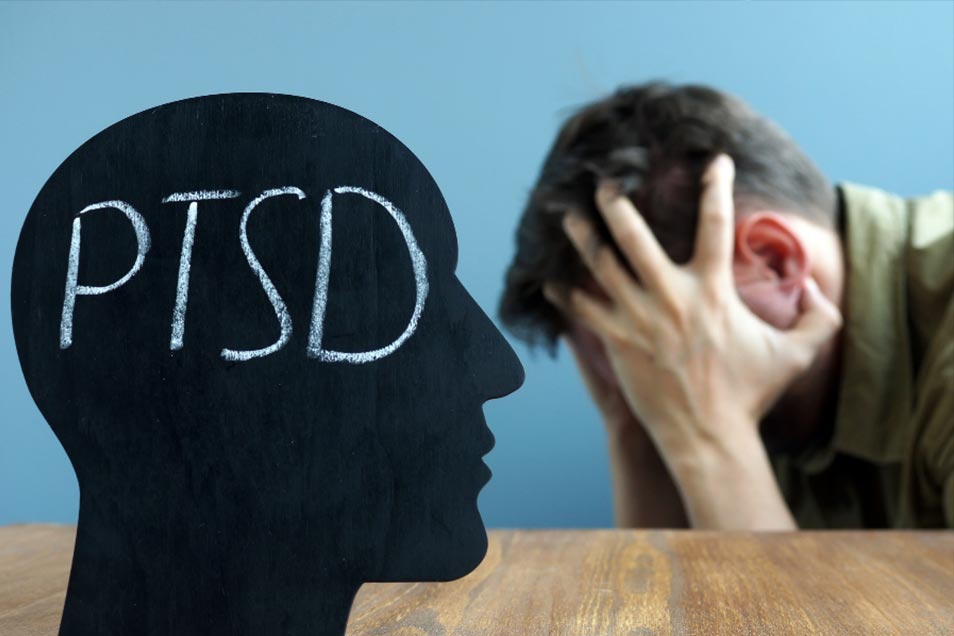Post-traumatic stress disorder (PTSD) is a psychological disorder that occurs in response to an overwhelming or traumatic event. This is why it is commonly seen in veterans, but sadly, 1 out of 11 people experience these severe, life-changing occurrences.
What is considered trauma?
Trauma can occur in various ways, but a few common experiences are generally known to be traumatic. These can include:
- Abuse or neglect
- Sexual or physical assault
- Divorce
- Family or parental abandonment
- Incarceration
- Job loss
- Natural disasters
- Physical injury
- Serious illness
- Terrorism
- Violence
- Witnessing a crime, accident, or death
Some of these events are one-time incidents, like natural disasters or car accidents. Other traumas occur continuously, like coping with an illness or recurring abuse in childhood. Unfortunately, some traumatic incidents are overlooked, like medical trauma, trauma from childbirth, or major surgery.
These horrifying experiences trigger an extreme amount of fear and an overwhelming amount of stress. While some people can recover over time with little to no symptoms, some may feel "stuck" in this constant state of fear and danger, without any real threat present. When this occurs, it may be a sign of PTSD or trauma-related anxiety.
Symptoms of PTSD
PTSD is defined by 20 symptoms according to the DSM-5 and outlined by 4 categories. Symptoms may arise within the first three months following an event, but in some cases, may not even appear until months, even years later. If symptoms last longer than four weeks or interfere with work/home life, you may have PTSD.
Categories of symptoms:
1. Avoidance: Following a traumatic event, a person's beliefs about the world around them are significantly impacted. This can lead to someone avoiding particular thoughts, feelings, or any reminders of the traumatic event.
2. Intrusion: Traumatic memories can be highly distressing and can involve flashbacks, nightmares, or intrusive thoughts. This is exceptionally likely to happen when you face a reminder (a person, smell, sound, or image) of the traumatic event.
3. Thought/mood changes: Feelings of shame, guilt, blame, lack of interest, withdrawal from others, or disconnection. This may also show up as:
- Depersonalization: Or feeling like you’re outside of yourself, or observing your physical self from an outsider’s perspective. Some people describe this as being in a dream or a movie. You may feel emotionally or physically numb or a sense of unreality.
4. Arousal & reactivity: Many feel on guard or hyper-aware of their surroundings after a traumatic event. This reaction is meant to be a means of protection, as the body attempts to keep you safe and alert you of any potential threats or vulnerabilities. This natural defense tool is more sensitive following a traumatic event and may look like:
- Irritable behavior or angry outbursts
- Reckless or self-destructive behaviors
- Exaggerated startle response
- Problems with concentration
- Difficulty falling asleep
While everyone experiences symptoms differently, symptoms of PTSD tend to show up as depression, stress, anxiety, amongst other disorders. This is also one reason that PTSD is one of the most misunderstood disorders within the mental health field.
Finding a mental health therapist
If you are experiencing symptoms of trauma, you may be diagnosed with PTSD. However, it's important to note that not all traumatic experiences will point directly to a trauma-related condition.
Treatment will depend on these symptoms and may include psychotherapy, medication, or a combination of both. You may benefit from:
- EMDR (Eye Movement Desensitization and Reprocessing)
- Cognitive Behavioral Therapy
A therapist can provide support and help you understand the impact of trauma and the symptoms you are experiencing. Remember, you are not alone, and healing is possible. Contact us today or call one of our three facilities to learn more and schedule an appointment!
References
https://www.ncbi.nlm.nih.gov/books/NBK207191/box/part1_ch3.box16/
https://www.emdr.com/what-is-emdr/
https://www.ptsd.va.gov/understand/what/avoidance.asp
https://www.news-medical.net/health/Intrusive-Thoughts-and-Post-Traumatic-Stress-Disorder-%28PTSD%29.aspx
https://www.mayoclinic.org/diseases-conditions/depersonalization-derealization-disorder/symptoms-causes/syc-20352911
https://www.healthline.com/health/hypervigilance


